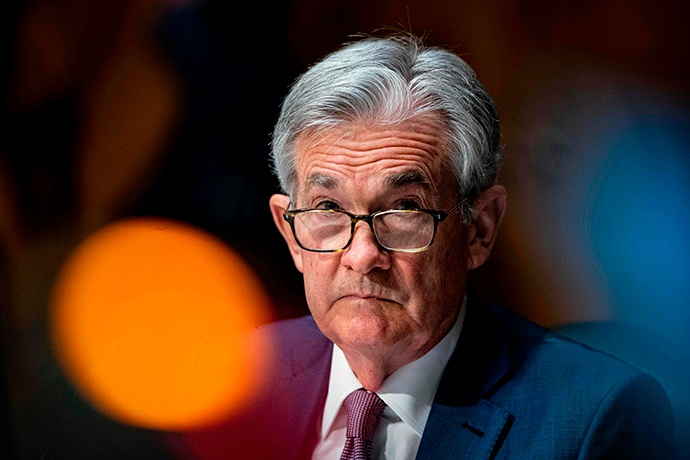The president of the Federal Reserve Bank of Boston said the Fed is ready to use tools to stabilize financial markets if necessary.
On April 12, Susan Collins, President of the Federal Reserve Bank of Boston, said the Fed was ready to use tools to stabilize financial markets if necessary.Although current market conditions are working well, Collins stressed that the Fed will be prepared to intervene in the event of liquidity tensions or market operating problems.
If a crisis occurs, what rescue plans does the Federal Reserve have?Hawk Insight brings you a piece.
Rapid deployment of mobility support tools will be prioritized.The Discount Window may further relax collateral coverage and lower interest rates, drawing on the experience of a 33-fold surge in borrowing after the cancellation of collateral discounts during the 2023 Silicon Valley banking crisis.At the same time, the operating frequency of the Standing Repo Facility (SRF) may increase from once a day to multiple times, and the operating scale may exceed the current US$500 billion limit, focusing on alleviating local liquidity tensions in the U.S. bond market.If the Overnight Reverse Repo (ON RRP) balance continues to fall to a critical point (currently approximately US$137 billion), the Fed may suspend its balance sheet contraction to maintain underlying liquidity.
The restart and optimization of the targeted rescue mechanism will become the key.The Bank's Term Financing Plan (BTFP) may be reactivated, allowing financial institutions to mortgage financing at face value of treasury bonds and MBS rather than market value to avoid an asset selling spiral.In 2023, the tool provided more than US$160 billion in liquidity, especially for banks holding long-term U.S. debt.For the corporate bond market, if the credit spread of investment-grade bonds exceeds 200 basis points (currently about 180 basis points), the primary/secondary market corporate credit instrument (PMCCF/SMCCF) may be restarted, referring to the US$750 billion operation during the 2020 epidemic.The Money Market Mutual Fund Liquidity Facility (MMLF), which absorbed $50 billion in assets, will also step in to prevent a similar short-term funding market freeze in March 2020.
Quantitative easing and balance sheet management will take on new features.Different from traditional open-ended QE, this round of asset purchases may focus on the liquidity vacuum caused by the liquidation of basis transactions in the U.S. bond market, and absorb excess supply of treasury bonds through daily targeted repurchase operations.In March 2025, the 10-year yield soared 49 basis points in a single week during the sell-off of U.S. bonds, which is close to the crisis level of March 2020. The Federal Reserve may follow the daily purchase pace of US$75 billion in treasury bonds + US$50 billion in MBS at that time.In addition, the use of US dollar liquidity swap agreements with the five major central banks may surge. In 2020, the mechanism provided US$450 billion in liquidity, and the European Central Bank has currently maintained a daily quota of US$500 million.
The complexity of policy coordination and expectation management has increased significantly.The Federal Reserve needs to find a balance between maintaining the 2% inflation target and market stability. The current core PCE price index is still at a high level of 2.8%, and there is limited room for interest rate cuts.Coordination with the Treasury may include suspending the Trump administration's "reciprocal tariff" policy to ease import inflationary pressures, while issuing special treasury bonds to provide a capital buffer for bailout vehicles, referring to the 2020 Treasury's Foreign Exchange Stability Fund (ESF) model providing MMLF with US$10 billion in credit protection.In terms of market communication, officials 'statements will strengthen the signal that "the toolbox is always open." For example, Boston Fed President Collins recently emphasized that a permanent mechanism takes precedence over interest rate cuts. This statement once pushed the Dow to rebound 600 points in a single day.
Potential constraints mainly come from three aspects: inflation stickiness makes it difficult to use traditional interest rate cutting tools. When the core CPI is still above 3% in 2024, the threshold for preventive interest rate cuts is set to "quite high"; political games may weaken the policy effect. Trump's tariff policy has pushed up import costs while exacerbating market volatility. The VIX index has recently risen to 32; There are signs of loosening in the global dollar system. The simultaneous weakening of U.S. debt and the U.S. dollar breaks the traditional risk-aversion logic and weakens the effectiveness of conventional instruments.These factors will force the Fed to rely more on "surgical" interventions, such as the use of the Standing Repo Facility (SRF) for closing out basis trades, or the targeted absorption of excess liquidity through the Reverse Repo Facility (ON RRP).
At present, we need to pay close attention to three leading indicators: If the TED spread (the three-month LIBOR and treasury bonds spread) exceeds 50 basis points, emergency measures will be triggered; the expansion of the commercial paper market spread to 80 basis points will mark the deterioration of short-term financing; If the bid-ask spread on U.S. bonds reaches three times the normal level, it indicates that the market maker function has failed.Historical experience shows that when these indicators collectively turn red, the Federal Reserve will be forced to break through the regular policy framework, and the possibility of launching unlimited QE following the example of March 2020 is not ruled out.

